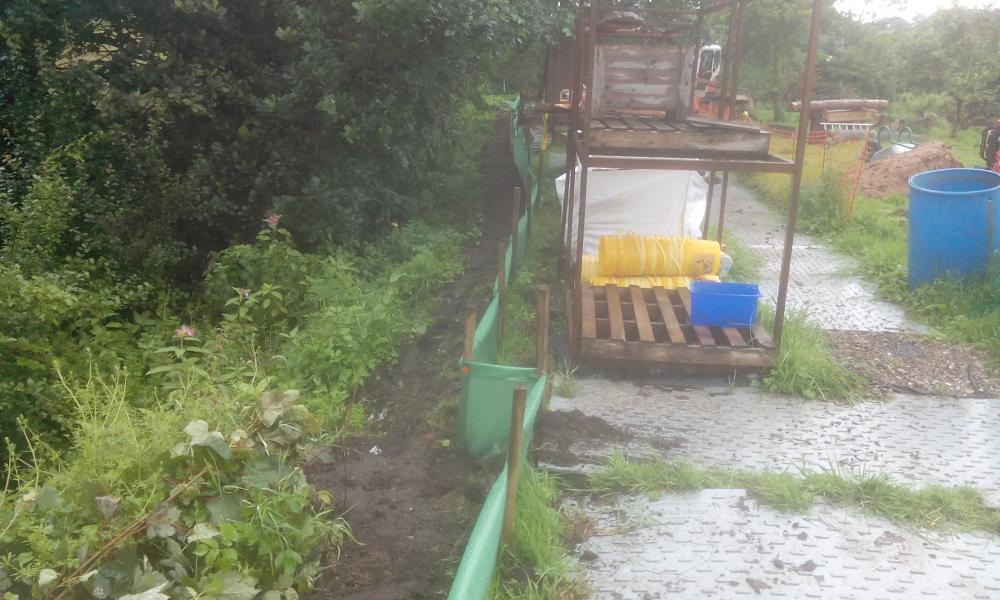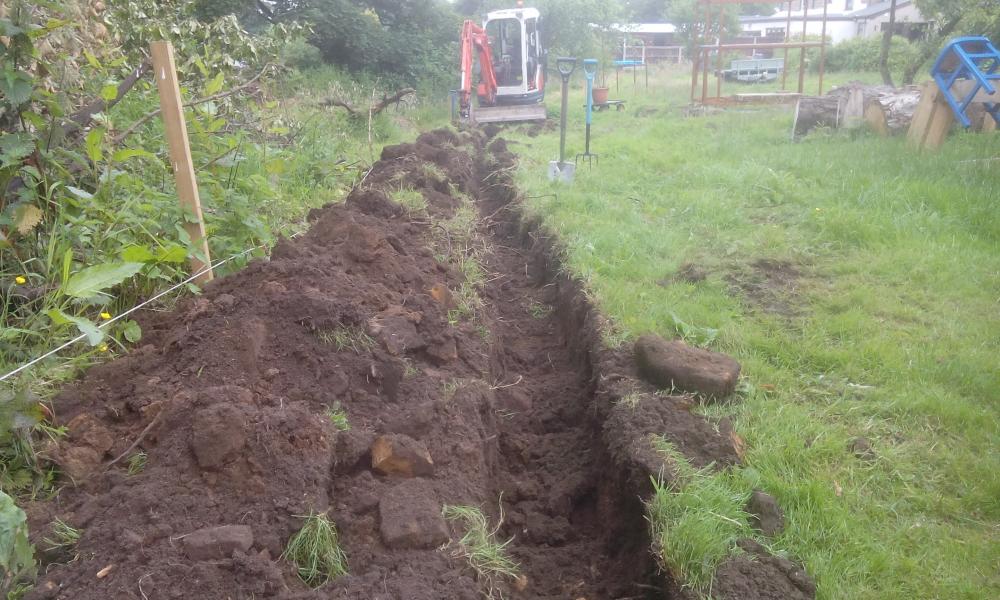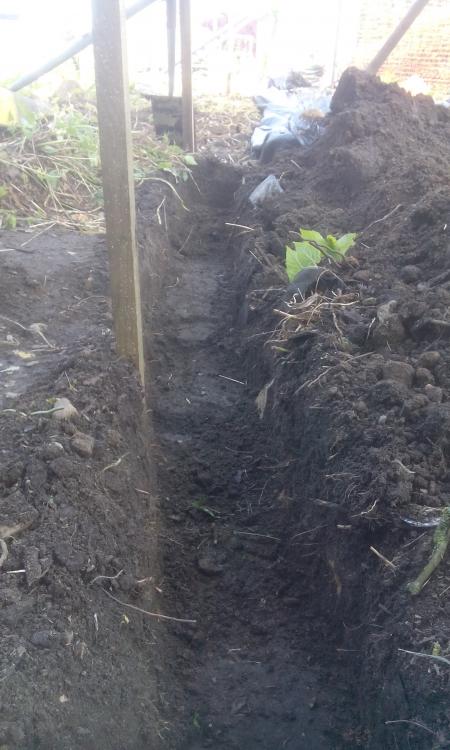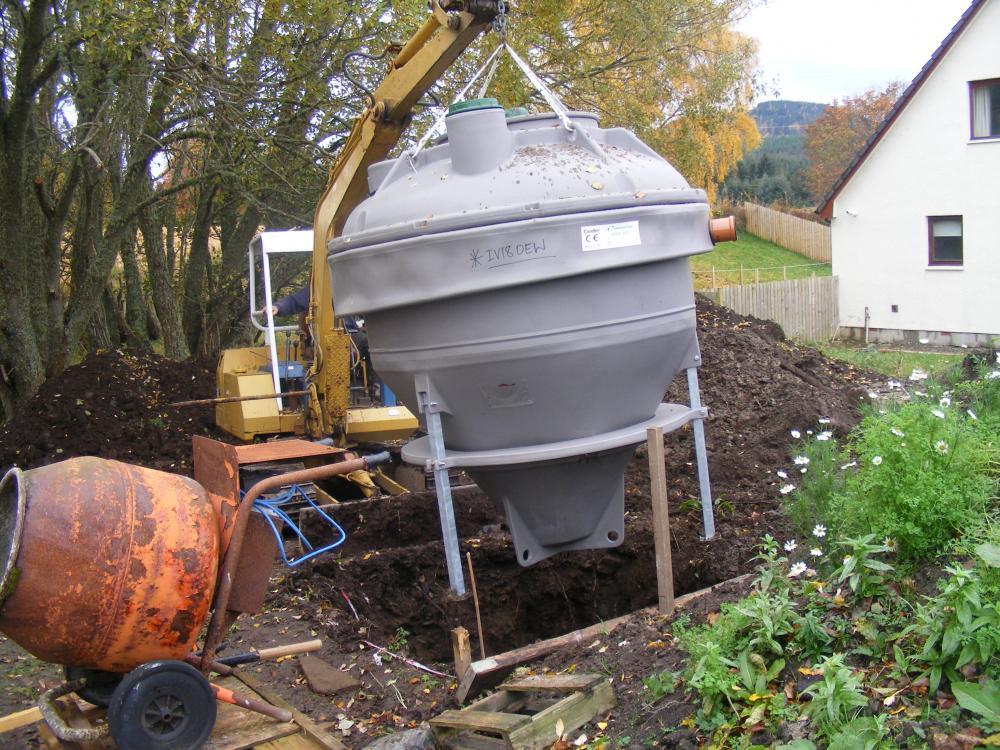Leaderboard
Popular Content
Showing content with the highest reputation on 07/11/16 in all areas
-
A: When it's a T emporary A mphibian F ence And here for your delectation is a set of photos to explain the idea a bit better; Starting from a Newt's eye view this is the trench that has to be dug all the way round your property. Our ecologist sensibly suggested we use our house as part of the TAF - thus reducing the amount of digging to be done and the mini digger came in handy too; Then the stakes have to be put in to support the plastic fencing Occasionally you need to do a little 90 degree turn in the fence.... fiddly and annoying, but fun in the rain So, not all TAFs are Welshmen.... or plumbers for that matter.3 points
-
There are a few = Buildzone, Protek, Buildstore amongst others. You will find the underlying insurer is normally Zurich though so don't expect huge variation in price !2 points
-
No, it's not a requirement, but it is a big (can be VERY big) energy saving measure. With a well-built and well-sealed house, with a reasonably good insulation standard, then it's pretty common to find that ventilation heat loss dominates, especially for larger builds, where insulation has less impact on energy use. For our build the MVHR saves around 50 to 60% of the total heat loss, so our annual heating energy bills would be roughly two to three times greater without it. Any saving from MVHR will vary a lot with the overall insulation level, the level of airtightness and the size of the house (for small houses insulation tends to dominate heat loss, for large houses ventilation tends to dominate). Unless the house is significantly better than the airtightness level in building regs, MVHR (even in a single room) probably doesn't give any worthwhile saving, though, so the decision is quite tightly linked to your airtightness target. For example, building regs allows a pretty draughty 10m3/m2 floor area/hour, with a pressure difference during the air test of 50 Pa. Our house is just under the passive house limit, at 1.22 m3/m2/hour, so makes MVHR worthwhile. If the air leakage was more than about 5m3/m2/hour then the saving from fitting MVHR probably wouldn't be worth it, in terms of energy cost saving. It'd probably still be worth it in terms of much improved air quality, though, and some fit MVHR just to gain that benefit alone.2 points
-
2 points
-
Hello Everyone, Just to say how relieved I am to have found you. I had just joined ebuild the week before it closed. I am just about to start a self-build in the East Midlands & have been really grateful for all the shared information. Best Wishes Moira1 point
-
1 point
-
You will have wet rooms where you want to remove air, kitchen bathrooms, utility rooms. Then you have rooms where you want the fresh air put back in, living room, hallways etc. The exact layout will be done by whoever you get your system from. For the outside its just an air vent which brings clean air in direct to the mhrv and a vent through which all the "dirty" air gets expelled from. Once again depending on your system these 2 vents might be in a wall or through vent tile.1 point
-
Pictures are good. Here's my treatment plant being lowered into it's hole. This is one of the designs that works with an air blower, and much like a lot of the other air blower plants gives just about the cleanest effluent possible. It costs under £2000 I would personally avoid the designs that use mechanical rotating parts, as I personally would not wish to be the one reparing them when dirty mechanical bits fail. Are you SURE you have a cess pit? if you do you will be emptying it very frequently. Are you sure it's not an older type concrete built septic tank?1 point
-
If you're off mains foul drainage, then there are three options, and the law was being changed to pretty much force everyone towards the most favourable one, in environmental terms, but I think that the EA (SEPA in Scotland, DOE in NI) just have too much work on to even look at enforcing the EU legislation on this. The least favoured option is a cess pit or tank. This has no means of treatment, will be highly septic (it's anaerobic) and needs frequent emptying, as it is just a sealed tank with no drains from it. You can now only fit one to a new build if it is for short term use or under special circumstances - BC try hard to dissuade their use. The next option is a septic tank. This is also septic (anaerobic, as its name suggests), but it makes the effluent it discharges safe by tertiary treatment by aerobic soil bacteria around the land drainage pipes that take the liquid effluent away. Septic tanks have a limited useful life, as after a few years biological films build up around the land drains and so stop oxygen reaching the soil around them. They then become septic and present a hazard because there is reduced aerobic tertiary treatment. After around 10 to 15 years the general consensus is that septic tank land drains won't be working as tertiary treatment and pathogens will be being discharged to the leach field, which is why the preferred option, treatment plants, have been invented. The preferred option is a package treatment plant, approved to the EU standard. This is not a septic tank, it operates under aerobic conditions, and so is very effective at removing pathogens and massively reducing the BOD (biological oxygen demand) of the discharged effluent. Treatment plants look a bit like septic tanks, except that they have a means to oxygenate the whole content (usually including the solids) by means of a mechanical system, an air pump, or some form of air permeable media and a ventilation system. The effluent from such a treatment plant is safe to discharge to a large soakaway, constantly running water course, a soakaway mound, or conventional land drains. No tertiary treatment is required by the drainage system, as the effluent is not septic and does not have a high BOD.1 point
-
They are just two small solar arrays connected to the main house circuit. Those roofs face South so it seemed a no brainier to do it. And yes they are indeed battery hens Well actually ex-battery hens (now called colony hens as more than one is kept in each cage to get round the rules) as my wife re-homes chickens from the Hen Welfare Trust1 point
-
In my recent world SENCOs are Special Educational Needs Co-Ordinators. They don't like being taken apart.1 point
-
Cheers for the thought, but just another thing to charge, have a lead for etc, when I already own a phone . Saw one on the bay for around £60, and another seller selling the same thing for £120. Gave up at that point and I'll just keep my eyes and ears open until a cheap 'I' flavoured one pops up until then I'll use my current inspection device.1 point
-
Oh and we are currently having "shed wars". SWMBO has decided that the shed next to the chickens is "her" shed. A shed for a woman, have you ever heard anything so daft1 point
-
Pickled Newt Designed to soothe amphibian or watery planning stresses. I haven't tried this one yet. https://makemeacocktail.com/cocktail/3909/pickled-newt/ To me that looks quite lightweight to me, so not particularly headache inducing the next day. Not at all capable of pickling a newt. Ferdinand1 point
-
I can usually clean mine with a soft broom, from ground level, as our eaves are quite low (around 2.6m above ground, IIRC). It's not easy to get at the vents from inside with the ones we have, as the outer grille is hinged at the top and clips open from outside to clean it. I think our problem is largely to do with the type of grill and it's location and orientation. It's located in the narrow alley (around 2m wide) between the rear of our house and the retaining wall behind, on the North elevation, at the East end. This has been a bit of a wind tunnel (until I fitted a fence behind the garage a few months ago), with the prevailing wind blowing stuff through that gap, and I suspect that may well have contributed to the fluff problem. If I get the new duct cowls in place in the next week or two then I'll monitor them and report back on whether or not they are as susceptible to catching fluffy stuff. The main problem seems to be fluffy weed seeds, like dandelion and Old Man's Beard, the latter grows in profusion in the hedges to the West, alongside the stream and ponds.1 point
-
TPO Tranquiliser If you are having trouble with TPOs (and I have had a lot of trouble with TPOs), this is a recommendation from Arsie on the Gardenlaw forum: Tried it last night - recommended and not *that* strong if sharing. I make it 4 units of alcohol each. I used an orange/mango smoothie for part of the juice, and added a splash of Cointreau to take the sharpness off slightly, and garnished with rubbed mint leaves. A squeeze of lime juice just before drinking might also be good. I also used crushed ice in the glass (half the volume) rather than a shaker, and a drinking straw. tasty, but I'll take a White Russian in preference for the winter. Ferdinand1 point
-
That sounds a little odd Anna - if that is official guidance from someone I would get them to check their source.. Best place to find all the "rules" for windows and so on is the building regulations approved documents. They are freely available on the planning portal website and can be downloaded. They aren't the easiest to read but there is lots of guidance in there. Any questions just ask - there are plenty of people who've had to live and breath them for the past few years...!1 point
-
Just started building in Edinburgh. Porotherm walls with PIR insulation. Concrete first and second floors. MVHR. Triple glazed. Hoping for low running costs but also a very quiet house that feels very solid. Plan to live there for the next 40 years. Hopefully I get those 40 years to enjoy it!1 point
This leaderboard is set to London/GMT+01:00










